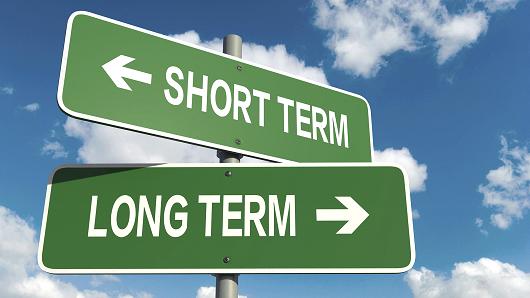Tag: swing trading
Should You Pay A Subscription for Good Penny Stocks?
Let’s face it, there are vultures in every industry – including good penny stocks. You see it a lot in the diet and health industry, companies promoting fads, in hopes you take the bait and bite. You might catch an infomercial on the weekends on that can’t-miss money making opportunity. When it comes to investing and trading, there  are hoards of individuals pitching you indicators, strategies, and alerts.
are hoards of individuals pitching you indicators, strategies, and alerts.
Does it ever make sense to sign up and pay for a subscription service pertaining to good penny stocks?
Before I share my opinion, let’s think about it for a second. The more competition, the more efficient the market is and the lower the profit margin. For example, let’s say you are at the supermarket and you’re interested in buying a package of hot dogs. You sift through the aisle and see that there are a number of different brands offering hot dogs. You’ll also notice that prices are relatively comparable. The reason being competition.
Now, imagine that you’re at Yankee Stadium and you’re hungry for a hot dog. You go to the vendor and notice that the price of a hot dog is the same price for 15 hot dogs at the grocery store.
Sounds crazy right?
Well, Yankee Stadium has no competition, you either buy their hot dog, or you don’t buy a hot dog at all. They have no competition, and therefore, they can set prices however they want. With that said, they have a very high profit margin.
Now, imagine that there is a trading strategy for good penny stocks that does very well in the market, meaning that it yields a good profit and has a high probability of  being successful. As more traders pick up on this, competition rises and profits become smaller and smaller. To compensate, traders will have to lever up just to get the same type of returns they were getting before. Eventually there will be too many traders in and the strategy has minimal effectiveness.
being successful. As more traders pick up on this, competition rises and profits become smaller and smaller. To compensate, traders will have to lever up just to get the same type of returns they were getting before. Eventually there will be too many traders in and the strategy has minimal effectiveness.
With that said, I’d be very cautious on anyone selling special indicators or signals. On the other hand, trading rooms, research, and even stock picking services can still be useful.
At the end of the day, there is only so much you can keep your eyes on, in respect to the market. The more qualified eyes, the better. You can learn a lot from good traders, as well as bad trader. Working on idea generation is one of the most important activities as a trader. You see, after a while, some strategies simply stop working, if you don’t work on ideas you’ll eventually be irrelevant. That’s why you’ll hear a lot of traders from the 1990s and 2000s struggle today, they never made the proper changes and are now obsolete – completely out of good penny stocks.
All in all, idea generation services are worth it, even if they are really bad in their picks. Because if they are awful, you can take the other side of their trades and be profitable. On the other hand, services that offer you how to trade or sell you a signal or strategy, the more users they get, the less effective they’ll eventually be.
Most professional traders trade in teams. They share their ideas with a select group of other traders they trust. Just make sure if you do decide to pay for a service, it’s something that fits your budget. Most services offer trials so make sure to test a bunch out before deciding what fits your trading style the most when trading good penny stocks.
How To Avoid Style Drifting When Trading Today’s Stock Market
The more successful and experienced you become as a trader, the more in touch you are with your strengths and weaknesses. Just like a pitcher in the MLB, they are aware of what types of pitches they throw that give the opposition difficulty. On the other hand, a good trader can tell you what their bread and butter trades are in today’s stock market.
However, from time to time, you’ll hear about other traders making large sums of  money doing something that you’re not exactly well versed at. So, instead of trying to learn what exactly they see, you blindly jump in with profits on your mind.
money doing something that you’re not exactly well versed at. So, instead of trying to learn what exactly they see, you blindly jump in with profits on your mind.
Generally, when you can’t explain why you’re in a trade, along with the exit points, you’re already on shaky grounds. However, it’s human nature to get caught up into something, but it should still be our main focus.
The worst is when you take on a trade that is out of your wheelhouse, and it ends up eating away at entire day’s profits. This type of behavior is often referred to as style drifting. Style drifting is one of the worst habits to have as a trader in today’s stock market.
How can you avoid style drifting in trading?
Well, an easy way is to consistently reinforce yourself what your bread and butter trades are. By categorizing your trades, you’ll be able to figure which ones are the best based on P&L. On other hand, you’ll find out which types of trades don’t suit you well. Getting familiar with your own trades will help you focus on what needs to be done in order to be successful in today’s stock market.
 Now, there is nothing wrong with trying new trading strategies. However, these trades should be sized so small that it doesn’t affect your overall P&L. If you’re trading was conducted like a business, then these new trades are trying to show proof of concept. Once they show enough promise, you then can increase your share size and scale up.
Now, there is nothing wrong with trying new trading strategies. However, these trades should be sized so small that it doesn’t affect your overall P&L. If you’re trading was conducted like a business, then these new trades are trying to show proof of concept. Once they show enough promise, you then can increase your share size and scale up.
With that said, keeping a trading journal is extremely important. There is no way you’ll be able to remember every single trade in your head. Eventually your brain gets foggy, and you tend have selective memory when it comes to your trading. However, a detailed journal will allow you to refresh your memory and walk through the entire process over again for today’s stock market.
Not only that, but it will keep you accountable for your actions. For example, some traders might plead ignorance as their defense for putting on a bad trade. But if they  only studied their performance, they would know exactly how they fared on specific types of plays.
only studied their performance, they would know exactly how they fared on specific types of plays.
As noted earlier, you should always work on your skills and new ideas. But always focus on your bread and butter trades, and see how they can be better. If you’re unsure of what they are, it could lead to style drifting, trading aimlessly without a plan. A great way to avoid style drifting is to review and journal your trades. Style drifting happens to everyone, but the better traders make it less and less of a habit in today’s stock market.
How Much Do Need To Get Started In The Stock Market?

Imagine you wanted to learn how to play the piano, and were in the market to purchase one. Now, if you’re not familiar with how much they cost, the range is anywhere between a couple thousand dollars to upwards of several hundreds of thousand dollars.
Do you think if you got a really expensive one, it would help you play better?
Heck no. Unless you’re rich, it makes zero sense to go out and fork over a lot of dough for something like this. The reason being, you are just starting out, you don’t even know if you’ll stick to it, and most likely you’re just playing for yourself, not like you need something fancy because you’ll be recording or performing for large audiences.
In business, they teach entrepreneurs to keep expenses lean and show proof of concept before expanding an operation. You don’t want to get involved with long-term leases or anything else that will put you under capital restraints. Again, you don’t know if the business will thrive, no reason to add pressure early on.
To most people, this makes a lot of sense. However, when you transfer this concept into penny stock trading, some don’t get it. You see, for whatever reason, some people think like you need to have a lot of money to get started in the stock market. That’s simply not true. And it is certainly not true when it comes to good stocks to invest in.

Going back to our previous examples, what is a lot of money going to do for you? In the beginning, you’re learning the fundamentals, discovering who you are as a trader, making mistakes, and hopefully learning from them. In other words, it’s a process… and having a lot of money doesn’t give you a pass or allow you to skip that. Why anyone would think this is the case with day trading stocks is somehow puzzling.
In fact, it actually makes more sense to start off small. Most likely, you will make more mistakes early in your trading career than later. Better to make small mistakes than expensive ones. For those saving, to get X amount to start trading… stop putting it off. Again, why wait? You might find out trading is not for you and realize that you just wasted time.
You must first learn the process of trading, finding penny stocks, and discover which strategies are suitable for your personality type. In addition, you must learn the skills of position sizing and risk management. For the most part, this will require you collecting data from your trades and analyzing that. That requires screen time, it doesn’t matter if you are risking $100 or $10,000 on a trade.
Ultimately, if you stick with it, learn and develop an edge… a time will come when you want to scale up your trading operation. Until then, start off small and begin the journey. Don’t focus on getting rich…focus on learning the process first. And don’t limit yourself to otc stocks, explore large cap stocks, too.
Imagine, leaving your day job to play the piano for a world-class orchestra without having any experience. Sounds silly right? Well, take that concept and apply it to trading. There is a learning curve involved in trading, the idea that you can leave your job to trade is really unrealistic. Well, initially it is. If you get to a point where you develop a strategy that has edge, and you’ve built up a solid track record…then yes, it’s possible to trade full time. However, you just need to get your feet wet in the beginning. That’s why you shouldn’t overly concern yourself with how much money do you need to get started — that’s the key to excelling at penny stock trading.
If You Don’t Understand ATR Now, You’ll Hate Yourself Later
Ever have the right idea on a stock trade, but not give yourself enough room for it work? For example, you buy too many shares, the stock initially drops and forces you to cover, only to see it later rebound and move in the direction you were expecting. You had the right idea, but sized the trade poorly.
Now, this a problem that many traders deal with, even ones who have several years of experience under their belt. Crazy moves happen and we underestimate volatility sometimes. However, some traders are absolutely clueless on volatility and they miss out on good stocks to buy.

One tool that you could use to gauge volatility is Average True Range (ATR). In order to calculate ATR, the true range must first be discovered.
Now, the true range uses the most current period’s high and low range, not to mention, the previous close, if necessary. There are actually three calculations that need to be conducted and then later compared amongst each other.
In other words, the true range is the largest of these following:
The current period high minus the current period’s low. Example: $10 – $8 = $2
The absolute value of the current period’s high subtracted by the previous period’s close. Example: ($10 – $9)= $1
The absolute value of the current period’s low subtracted by the previous period’s close. Example: ($8- $9) = $1
true range=max[(high – low), absolute value(high – previous close), absolute value(low – previous close)
The ATR is a moving average, usually 14 periods, of the true ranges.
How can we use this to make better trading decisions on day trading stocks?
Well, it can help guide us on how to position size smarter. For example, if an ATR for a stock is $2, and we only want to risk $100 on the trade, buying 1000 shares is probably a horrible decision. If the stock moves just 10 cents you’ll be out of the trade based on your risk parameters. However, if the stock has an ATR of $2, a ten cent move is extremely minor.

Of course, there are other elements to consider like support and resistance levels, along with recent highs and lows. But you can see how some traders can size a trade so poorly without considering volatility. Not only that, it could lead to churning their account, hopping in and out of trades and racking up trading fees.
You want to put yourself in a position to win, you’re not doing that if you are not including volatility in your trading decisions on the best stocks to watch.
What else?
You could also use ATR as a tool to enter/exit a trade. For example, let’s say the ATR for a stock is $1, and you notice there is no news in the name and it’s down $1.25. If the overall market is relatively normal, then playing for a bounce might make for a decent long. The idea is that on a normal day we can expect the stock to trade in this range and that it should mean revert at some point.
Again, this works best when stacked up with other criteria, but you can still see how it can be useful. On the flip side, if the stock price seems overextended, you might lay off and wait for a better entry given its move and ATR.
A lot of rookie traders get their position sizing wrong, along with entries and exits. Having a greater understanding of volatility and using a tool like ATR can help alleviate some of those easy to avoid trading mistakes and zero in on undervalued stocks.
